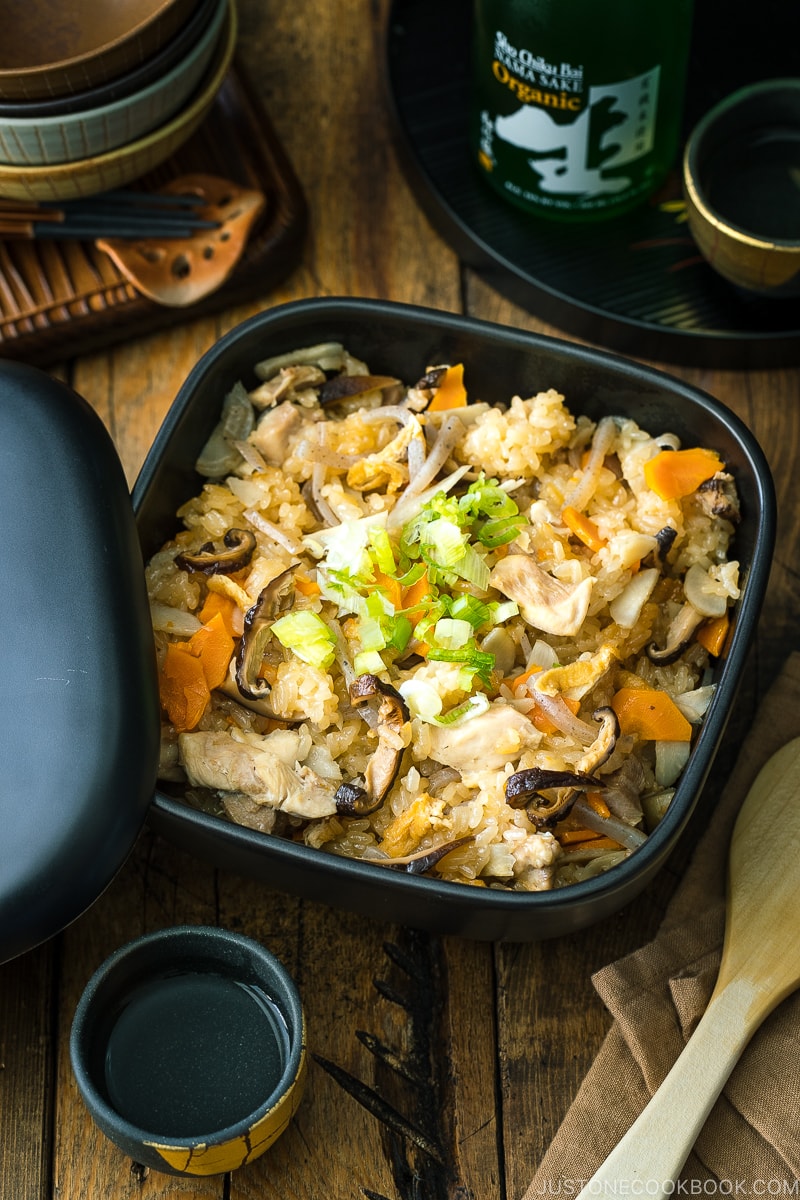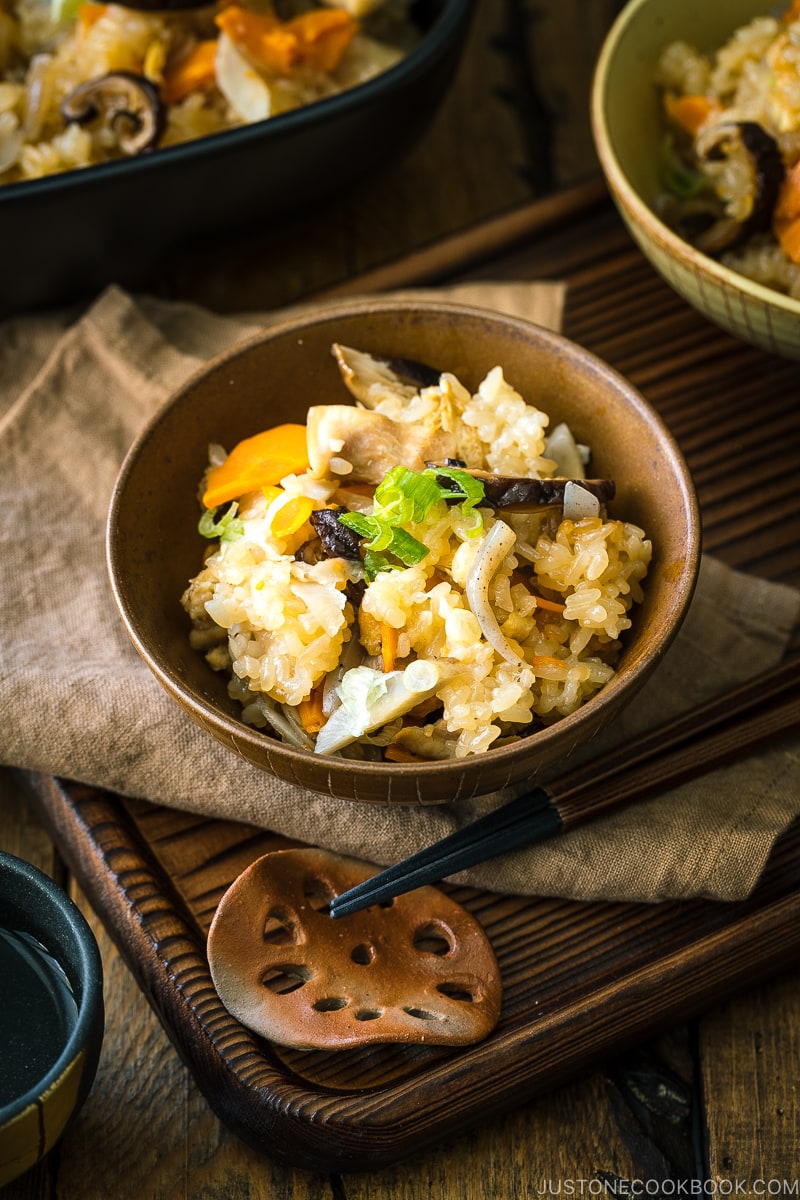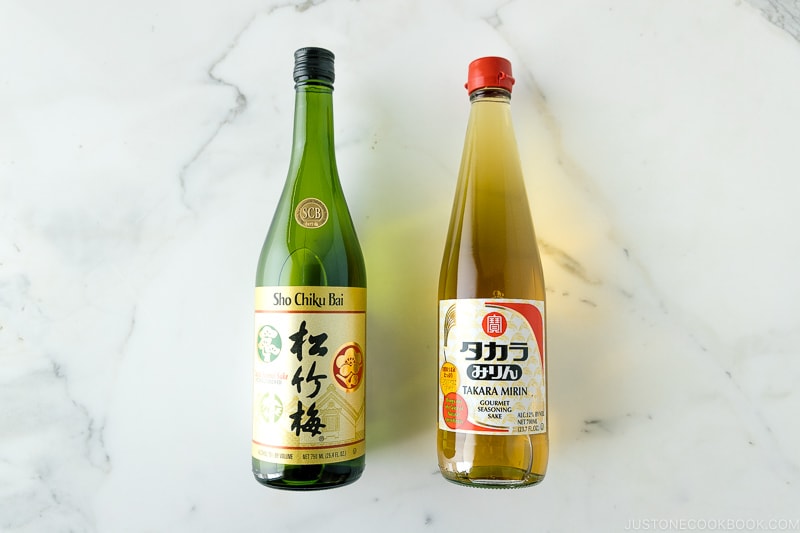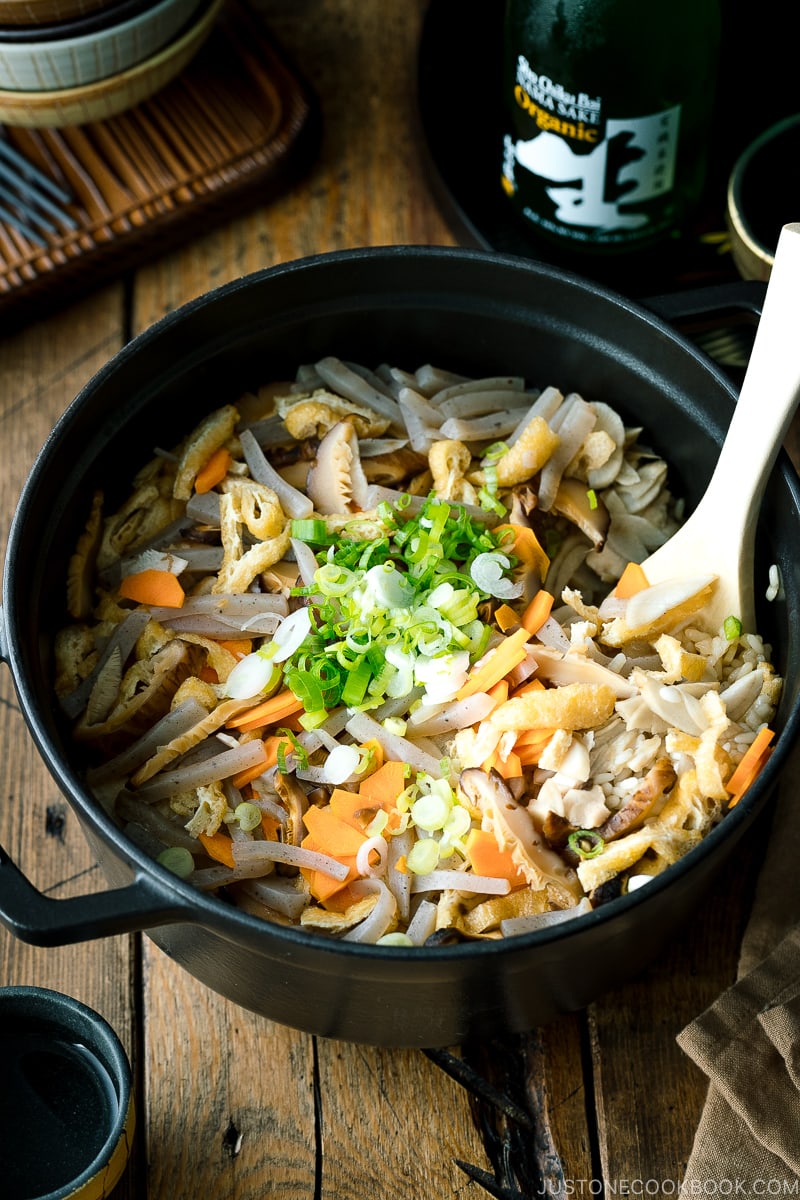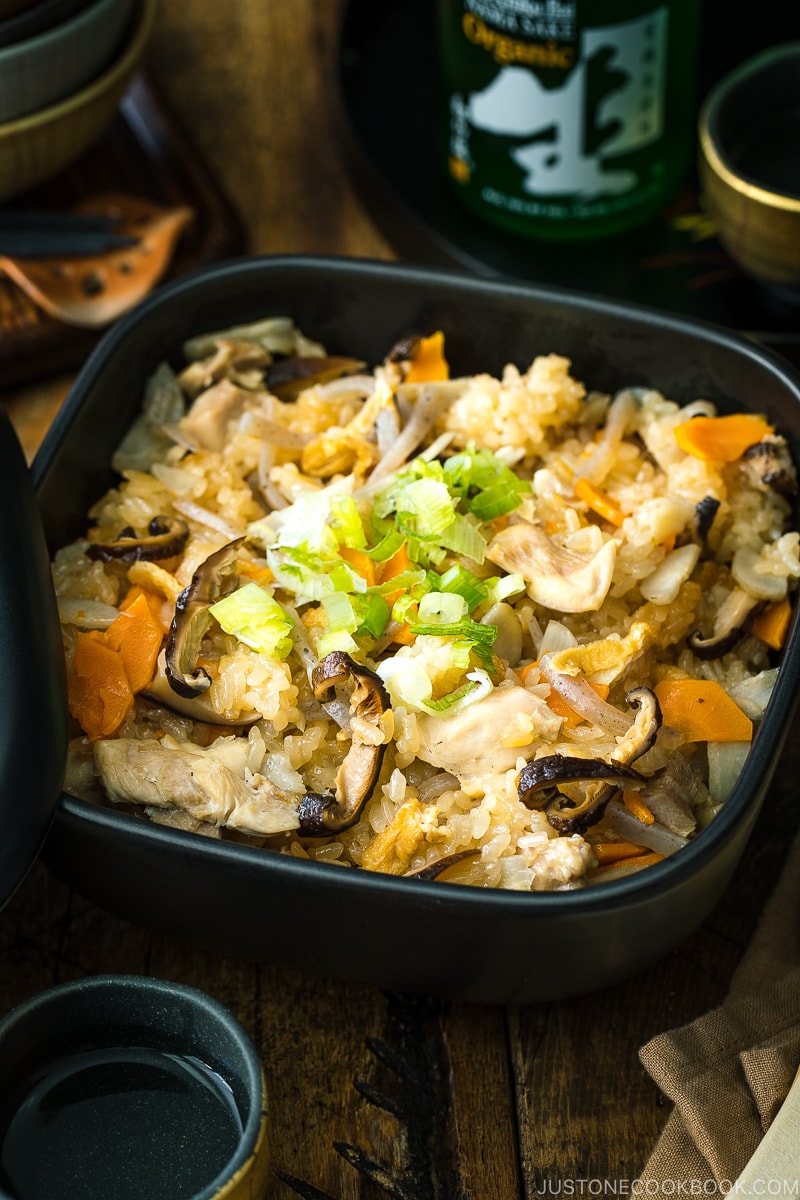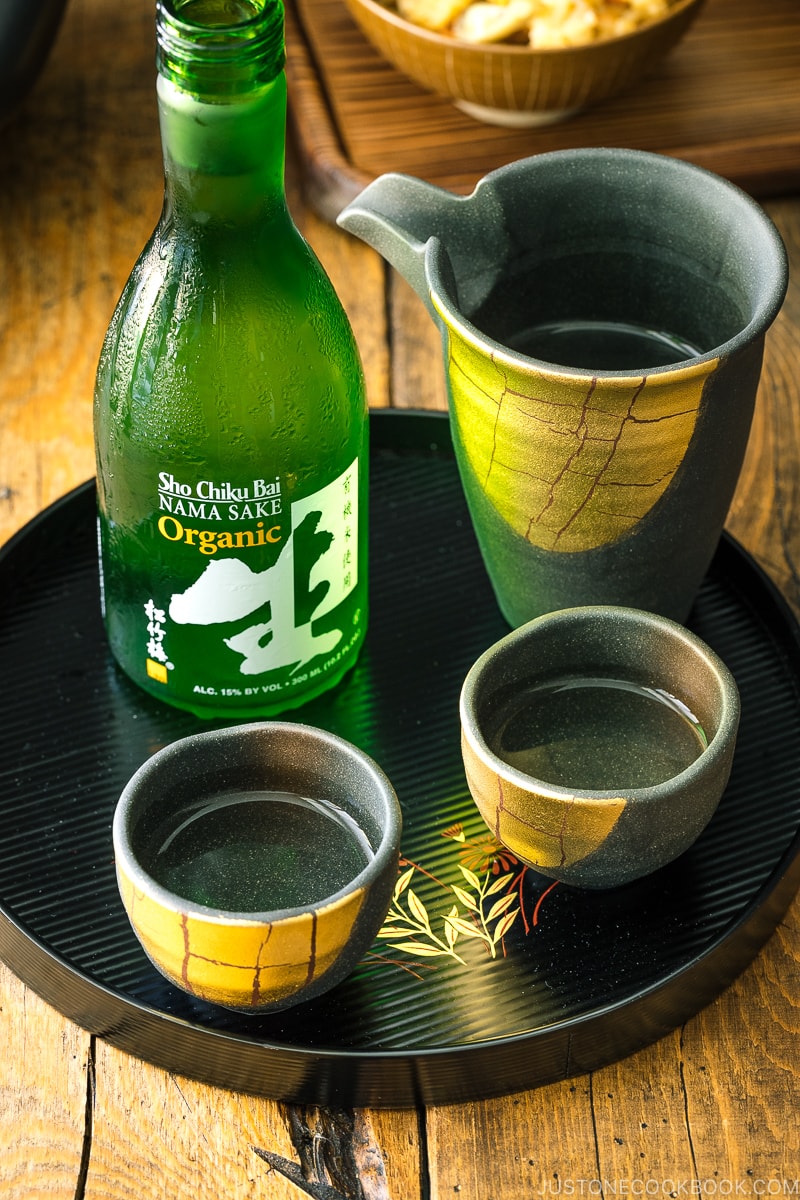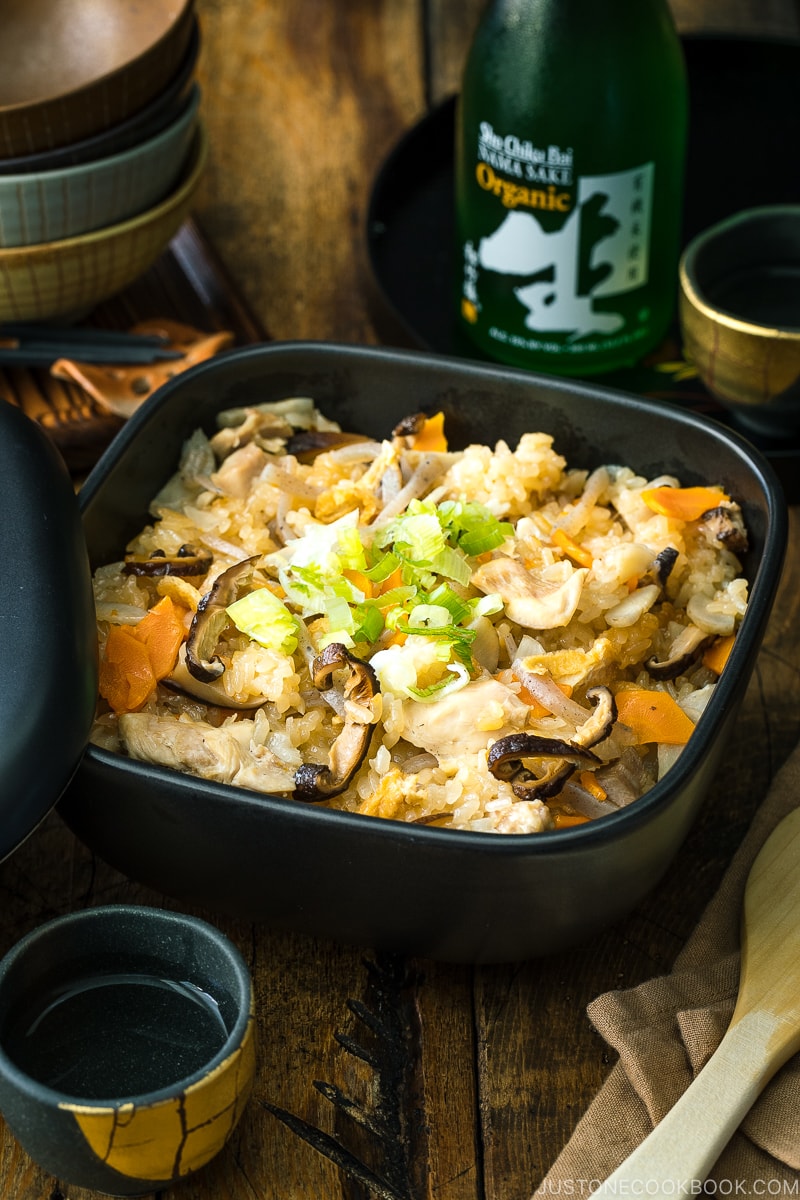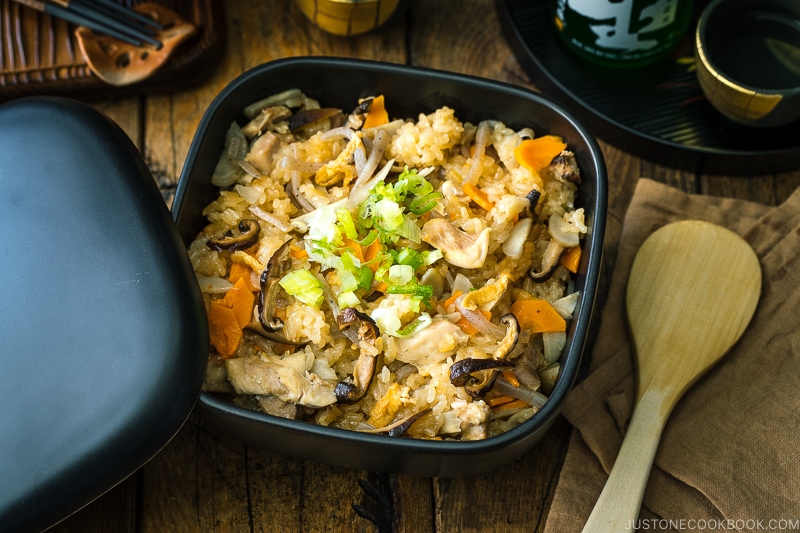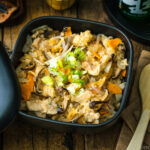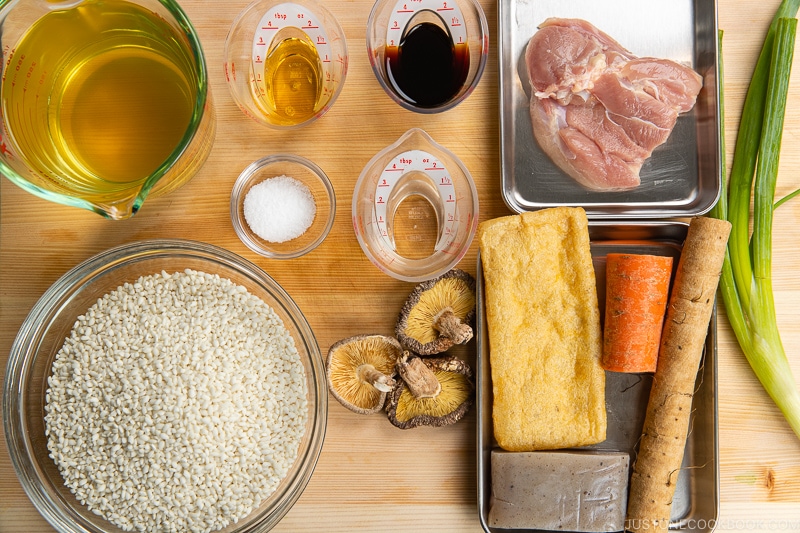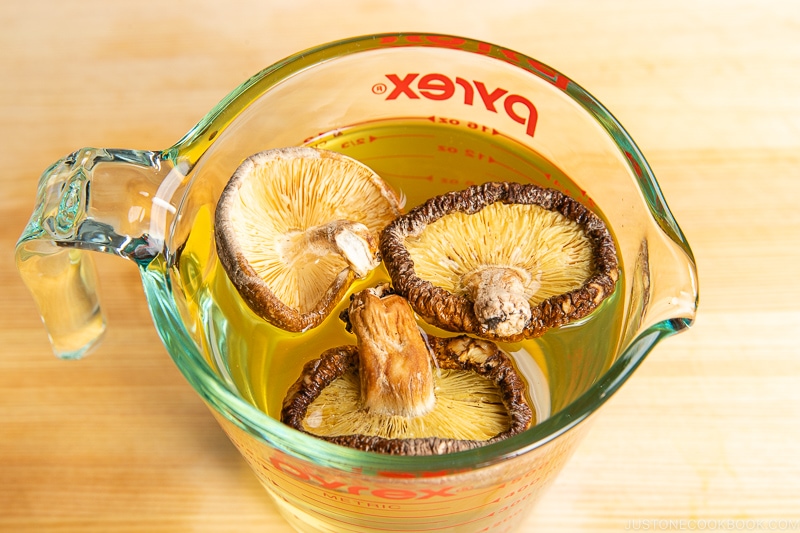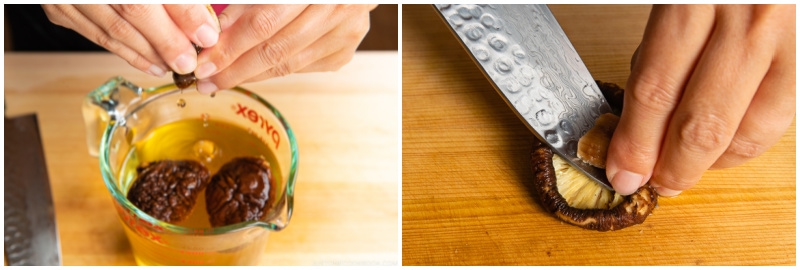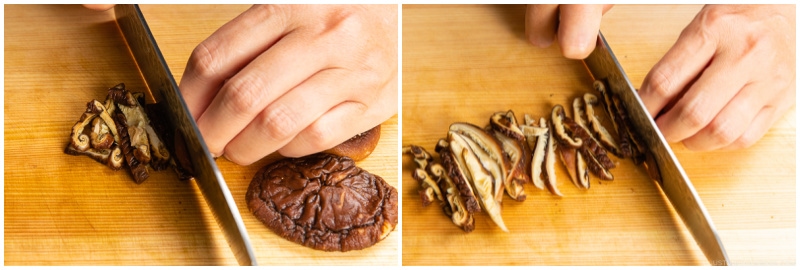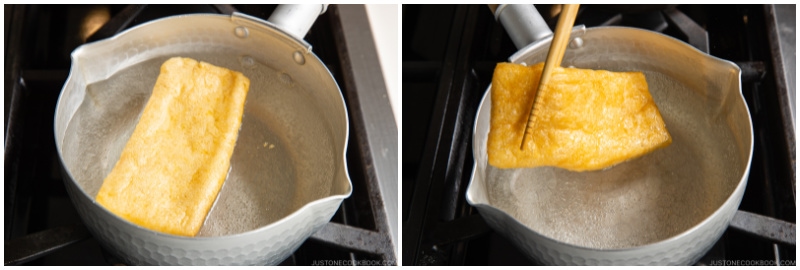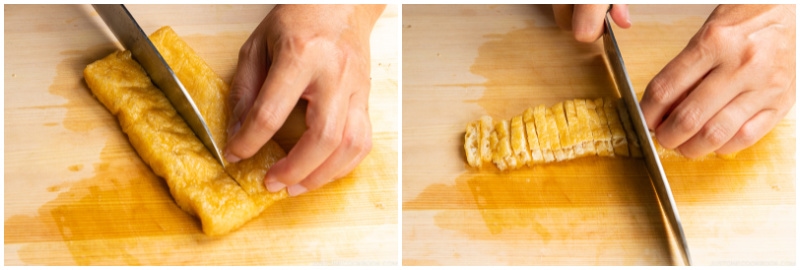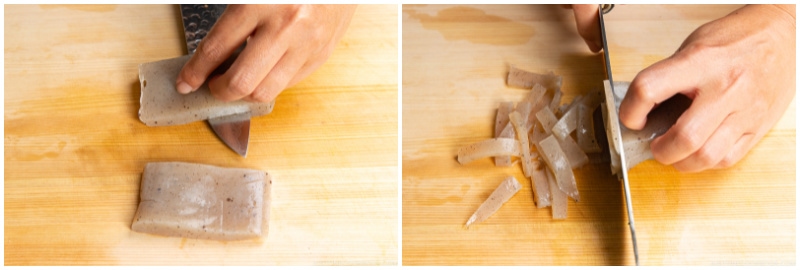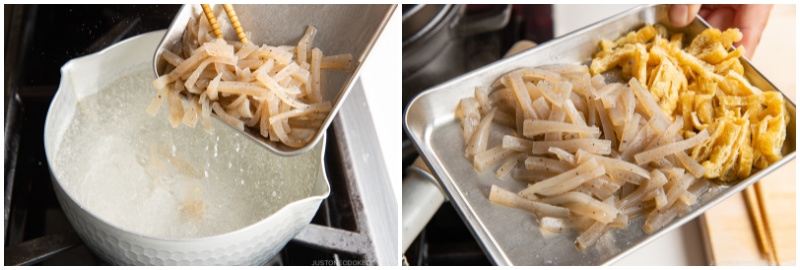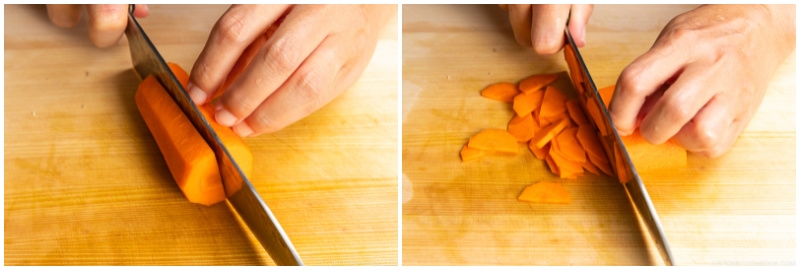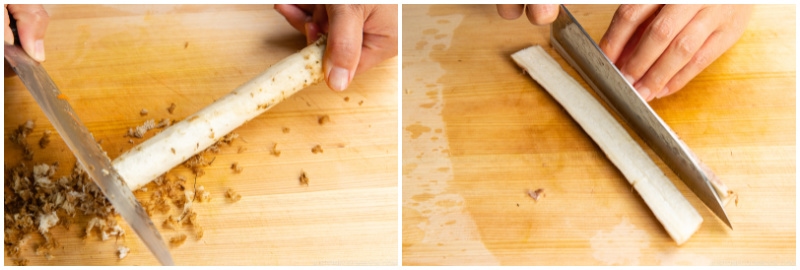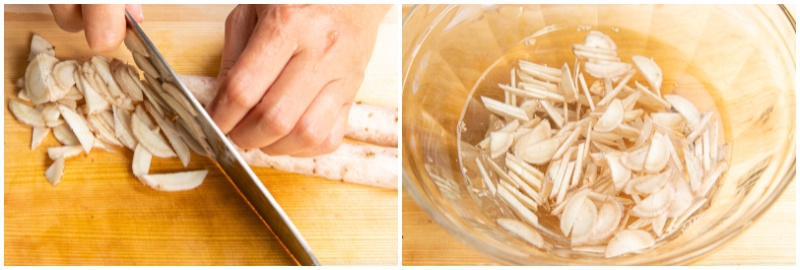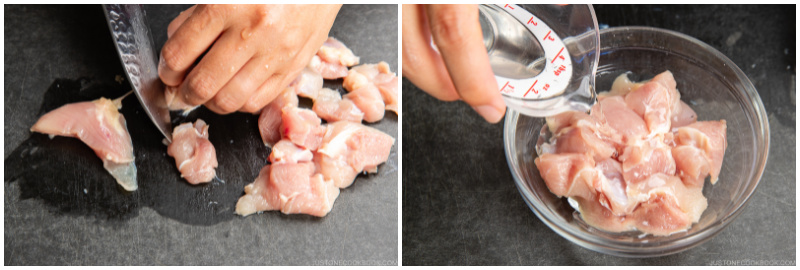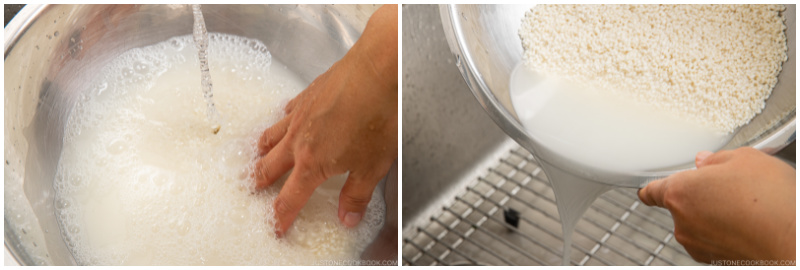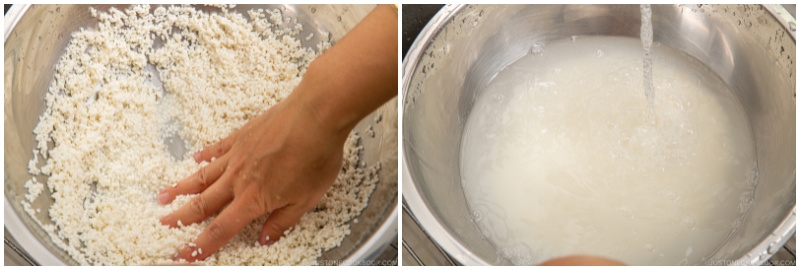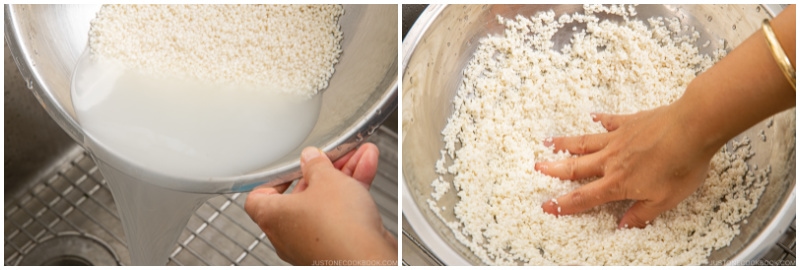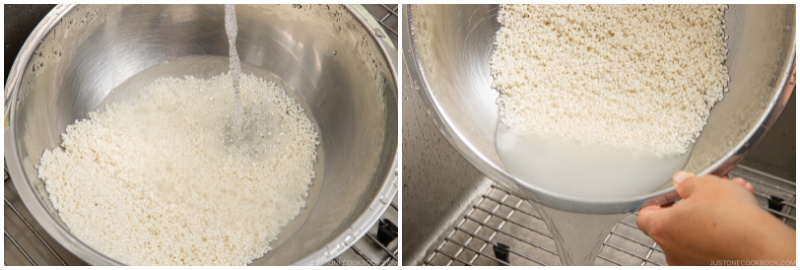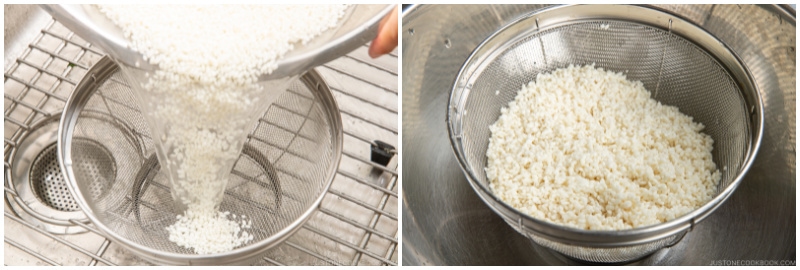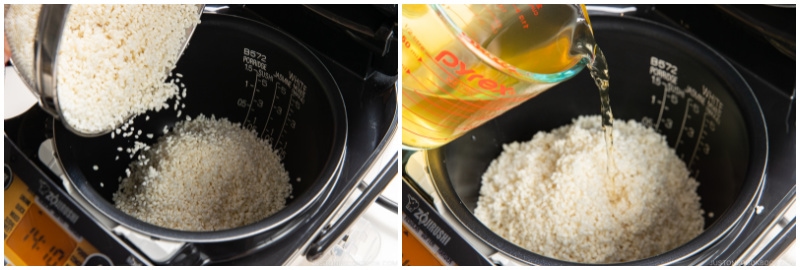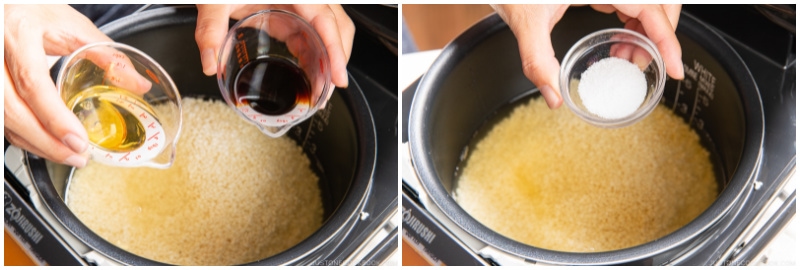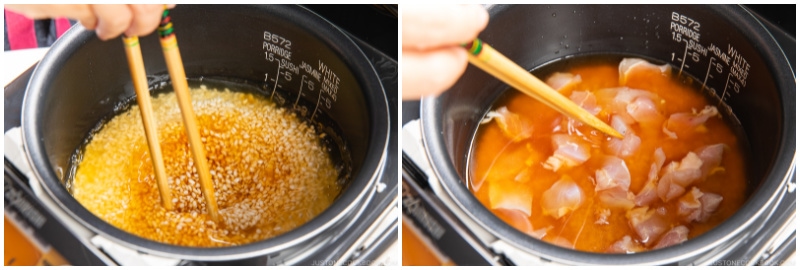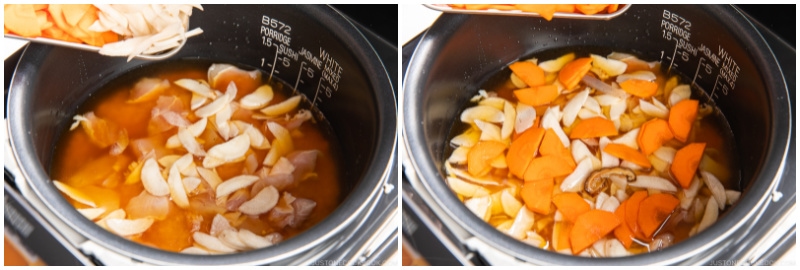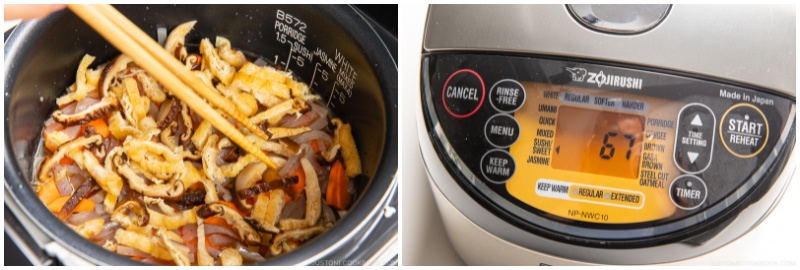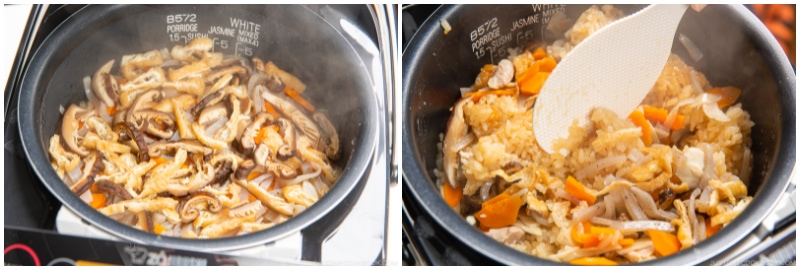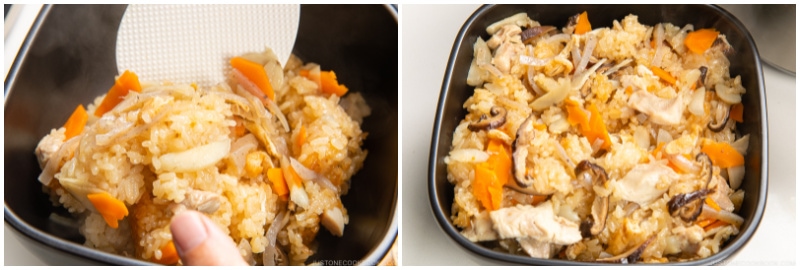My son is a big fan of Chinese sticky rice with chicken (Lo Mai Gai) and he always orders it at dim sum. I realized I haven’t introduced him to the Japanese version of sticky rice, so here we are, this is my Japanese Sticky Rice with Chicken and Vegetables (also known as Gomoku Okowa (五目おこわ) or simply Okowa). Not only the recipe has a great texture, it is also full-flavored and super comforting. You’ll be surprised how easy it is to make this at home.
What is Okowa?
Okowa (おこわ, 強飯) is a Japanese steamed rice dish made with glutinous rice, meat, and/or vegetables. There are a few varieties and the popular ones include:
Azuki red beans – Sekihan (赤飯) Bamboo shoot – Takenoko Okowa (たけのこおこわ) Chestnuts – Kuri Okowa (栗おこわ) Japanese mountain vegetables – Sansai Okowa (山菜おこわ) Japanese sweet potatoes – Satsumaimo Okowa (さつま芋おこわ)
The unique feature about Okowa is that we enjoy it at room temperature, so you may find Okowa onigiri (rice ball) sold at rice ball shops or convenience stores in Japan. The Japanese word ‘Okowa’ stems from a shortened form of Kowameshi (強飯, meaning “hard rice”). In the old days, white rice was hard to come by and expensive, so Japanese people could not eat pure white rice. They commonly ate a porridge-like mixture made with wheat, Japanese millet, and foxtail millet. Because the texture was soft, it was called “weak rice” or Himeii (弱飯). On special celebratory occasions and festivals, the glutinous rice was prepared instead of the porridge. It was called “strong rice” or Kowameshi (強飯) because of the firm texture.
Ingredients for Japanese Sticky Rice
You’ll need basic and common Japanese ingredients for this recipe.
Glutinous rice – make sure it’s short-grain Japanese “mochigome” Chicken Carrot Gobo – skip if you can’t find it Konnyaku (konjac) – skip if you can’t find it Dried shiitake mushrooms – can substitute with fresh shiitake or shimeji mushrooms Aburaage (fried tofu) – can substitute with tofu puffs from Asian grocery stores Green onion/scallion Seasonings: dashi (Japanese soup stock), sake, soy sauce, mirin, and salt
For sake and mirin, I recommend using Sho Chiku Bai Junmai Sake and Takara Mirin. I’ve been partnering with them for a long time because I use them in my daily cooking and love them. Some of you ask if it’s okay to substitute or skip sake and/or mirin, but if you plan to make Japanese food in the near future, invest in these condiments. They are as equally important in Japanese cooking as soy sauce and miso, and they are one of 6 must-have Japanese condiments.
Sho Chiku Bai Junmai Sake: This is a great $6-7 drinking sake, and I use it for my cooking too! I do not use cooking sake as it contains salt and other (unnecessary) ingredients. Takara Mirin: Made with premium rice, Takara Mirin is a natural sweetener. It enhances flavors and umami and boosts a beautiful glaze.
You can find Sho Chiku Bai Junmai Sake and Takara Mirin in Japanese and Asian grocery stores.
How to Make Japanese Sticky Rice
Rice Cooker Method
If your rice cooker does not have a sweet rice mode, you can simply use a regular cooking mode to cook your Okowa. The glutinous rice absorbs water quickly so sweet rice mode cooks for a slightly shorter time.
Stovetop Method
If you don’t have a rice cooker, you can use a donabe (Japanese earthenware pot) or a heavy-bottomed Dutch oven. Don’t use a lightweight pot because the heat distribution is not very good and it may burn the rice. The lid must be tightly closed to seal in all the moisture and steam. It’s really easy to cook Okawa and here are the 3 steps:
Cooking Tips
Glutinous rice absorbs water very quickly. It’s important to rinse the rice in a quick manner and drain. Unlike regular Japanese short-grain rice, you do not need to soak the glutinous rice for 30 minutes. Cut the ingredients slightly smaller and flatter. I use the sogigiri (削ぎ切り) cutting technique for the chicken so that chicken will have a flat shape with more surface. I also cut ingredients thinly so everything will be cooked properly. Sake is to remove/mask any unwanted smell. I use it for chicken in this recipe. It also adds umami and natural sweetness to the dish. Parboil aburaage and konnyaku. It’s an extra step, but it’s important to use clean ingredients to produce a refined taste. Adjust the amount of cooking liquid based on your preference for glutinous rice texture. I prefer the rice to be on the firmer side, so I select dense root vegetables (less moisture) and avoid high-moisture ingredients. Based on the ingredients, I carefully adjust the amount of dashi.
Pairing with Sho Chiku Bai Organic Nama Sake
We paired this savory Okawa dish with Sho Chiku Bai Organic Nama Sake. Since the dish is thick, chewy, and nutty from all the root vegetables and other ingredients, the Nama sake contrasts very well with its young and vibrant characteristics. This dry sake has a clean and crisp aroma, but don’t let it trick you. The taste profile is full-bodied and stands up to Okowa on its own. Why is this sake called Nama? In Japan, “Nama” means raw and is used to describe beer that is not pasteurized, giving it better flavor and fresher taste. So when you’re in a restaurant or bar in Japan and you want beer, you order “nama-biru”. Similar to “nama-biru”, this unique sake was not pasteurized by heat but micro-filtered, keeping subtle sake flavors that are sometimes lost through the pasteurization process. We really enjoyed the pairing and other recommended food to pair with Sho Chiku Bai Organic Nama Sake include soba noodles, smoked duck, and sushi.
What to Serve with Okowa
You can enjoy this Japanese sticky rice as a standalone dish or serve it like you would with steamed rice. A miso soup and a side of vegetables such as Green Bean Gomaae and Hijiki Salad make good company for a light dinner. Wish to learn more about Japanese cooking? Sign up for our free newsletter to receive cooking tips & recipe updates! And stay in touch with me on Facebook, Pinterest, YouTube, and Instagram.
